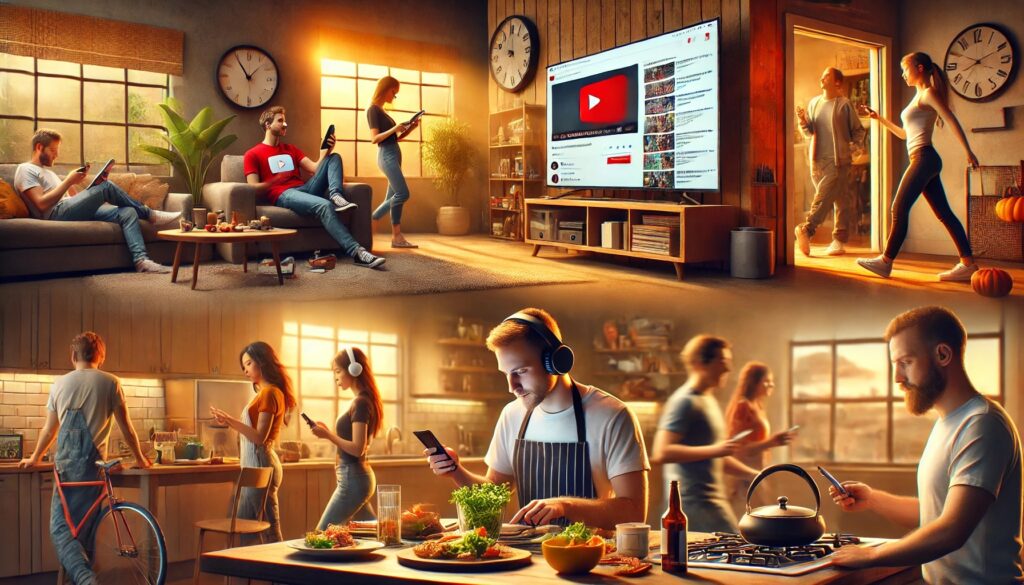The Problem with Podcast Analytics Today: Bridging the Divide Between Audio and YouTube Data
Podcasting has outgrown the tools built to measure it.
What started as a simple audio format is now a full-fledged content ecosystem. Top creators publish episodes across Spotify, YouTube, Apple, TikTok, and Instagram. Shows are embedded on websites, shared in newsletters, and clipped for Shorts.
But the analytics stack? Still stuck in the RSS era.
If you’re relying on downloads alone, you’re missing the majority of the conversation. And if your dashboard doesn’t include YouTube, it’s not analytics—it’s nostalgia.
1. YouTube Is the Podcast Platform Now
This isn’t a hot take anymore—it’s reality.
YouTube has become the default discovery engine for modern podcasts. Fans find episodes via algorithm, engage in the comments, and watch clips before ever subscribing to an audio feed. The retention data is precise. The reach is scalable. The feedback loop is immediate.
And yet, most podcast tools still ignore it—or treat it like a bonus.
That’s like trying to measure a TV show’s performance by only tracking Nielsen, ignoring YouTube TV, Hulu, or TikTok clips. It’s outdated. It’s incomplete. It’s not helping anyone grow.
2. Downloads ≠ Viewers. Listens ≠ Watch Time.
Downloads still have value—they show someone requested the episode. But they don’t tell you if that person hit play, how long they stayed, or whether they ever heard your sponsor’s CTA.
They confirm delivery, not engagement.
Meanwhile, YouTube shows:
-
Total watch time
-
Audience drop-off points
-
Comment volume and sentiment
-
Shares, likes, subscriptions
-
Viewer paths and retention curves
This is the kind of intelligence you need to grow a show, optimize a format, or prove ROI. If downloads are your primary metric, you’re reporting what left the kitchen—not what got consumed.
They’re not vanity metrics. They’re just incomplete.
3. Your Real Reach Is Probably 2–3x Higher Than It Looks
Let’s say your show gets 40K downloads per episode. Not bad.
But what if you’re also pulling 100K views on YouTube, plus another 50K across Shorts, Reels, or TikToks? Maybe another 10K from site embeds?
That’s nearly 200K impressions—but most podcast reporting stops at the first 40K.
Every episode is a content package now, not just an audio file. The question isn’t “how many downloaded it?”—it’s “how many people actually experienced it?”
Without a blended view across formats and platforms, your show looks smaller than it is. And you can’t optimize what you can’t see.
4. Brands Want Attribution. Creators Want Strategy. Nobody Wins Without Integration.
You run a multi-platform drop: YouTube, Spotify, Apple, clips on social, maybe even an email blast or homepage embed. A sponsor comes in. The episode drives results.
The questions come next:
-
Which platform drove the most meaningful engagement?
-
Where did listeners/viewers drop off?
-
Did short-form clips generate long-form lifts?
-
Which format drove the most clicks or conversions?
And the answer, more often than not?
🤷♂️
Not because the data isn’t there—but because there’s no unified place to see it. Everyone’s guessing.
That’s a strategic liability—for the creator, the brand, and the business of podcasting.
5. It’s Time for a Blended Impression Model
What we need isn’t complicated. It’s just overdue.
Total Episode Impressions = Audio Downloads + YouTube Views + Web Plays + Short-Form Plays
This should be the new baseline. A unified model that tracks real distribution—not just downloads—across every episode.
But it can’t stop there. A modern analytics stack should also:
-
Map retention by platform
-
Show performance by guest, topic, or CTA
-
Track clicks and engagement by content type
-
Benchmark against peer shows or category averages
We have the tools. We have the data. What we lack is integration—and urgency.
Final Word: This Isn’t Just Podcasting Anymore
This is content distribution at scale. And we need to treat it that way.
The best shows today are media brands. They live across formats, fuel multiple revenue streams, and build community in comments and clips. If your analytics don’t reflect that, you’re leaving opportunity—and money—on the table.
Creators deserve better insights. Sponsors deserve better answers. And the people running this industry deserve a system that reflects the way audiences actually consume content today.
Let’s stop guessing.
Let’s measure the whole show.
Let’s build better.

